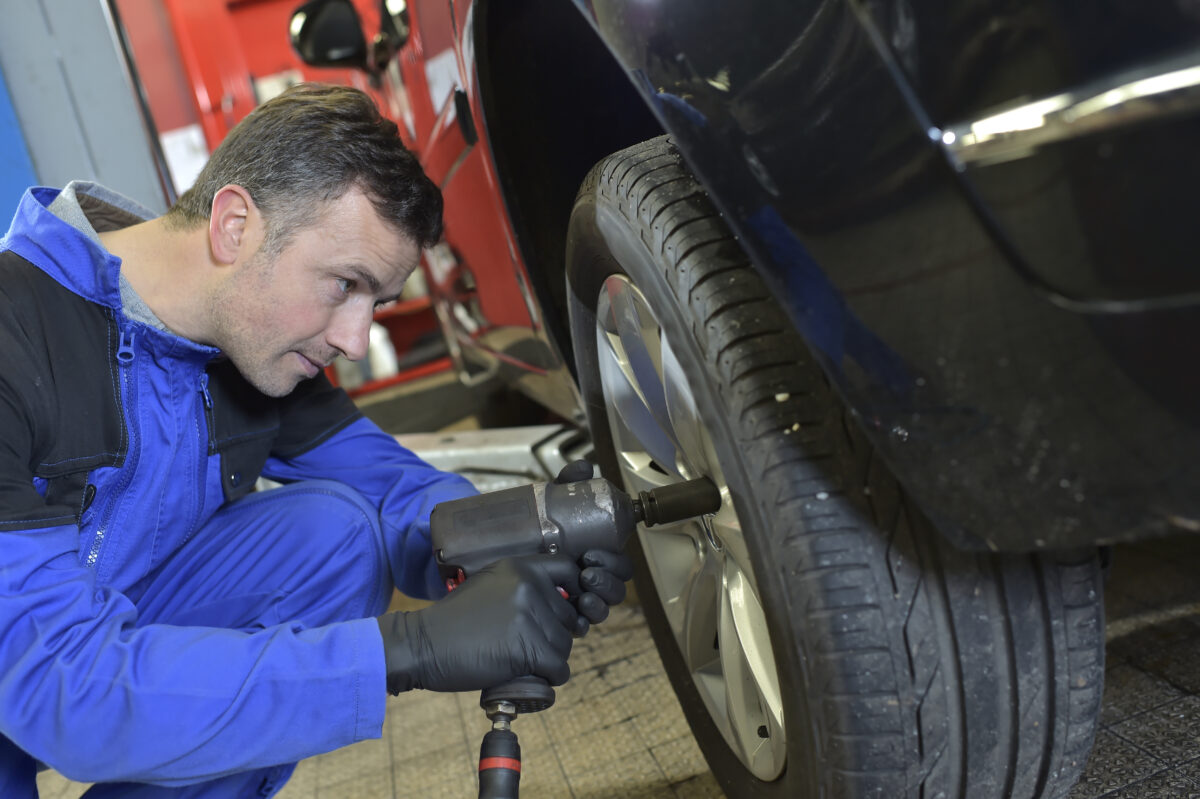The Bureau of Labor and Statistics (BLS) consistently puts the automobile industry in its top 25 most dangerous jobs list. That’s no surprise because it is an industry that exposes workers to heavy machinery, toxic chemicals, sharp tools, and lots of potentially harmful equipment.
The BLS’s most recent report proves the point, showing a nonfatal injury and illness rate twice as high as private industries. It’s a safety performance, which earns the industry that spot on the top 25 list and is estimated to cost over $120 million in additional health care and compensation costs per year.
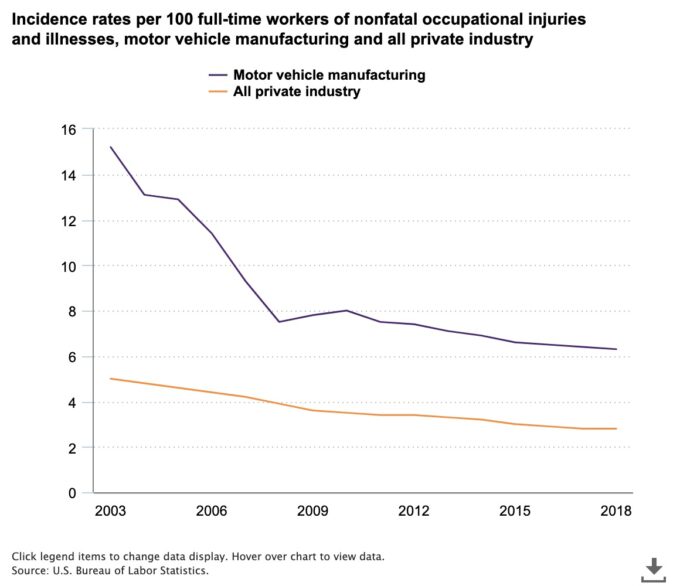
Though those statistics are startling, just knowing them won’t make workers any safer. Only until individual automotive companies take action will those numbers change for the better.
According to Occupational Safety and Health Administration (OSHA) officials, the first action to be taken for any company is to identify potential health and safety hazards at the worksite.
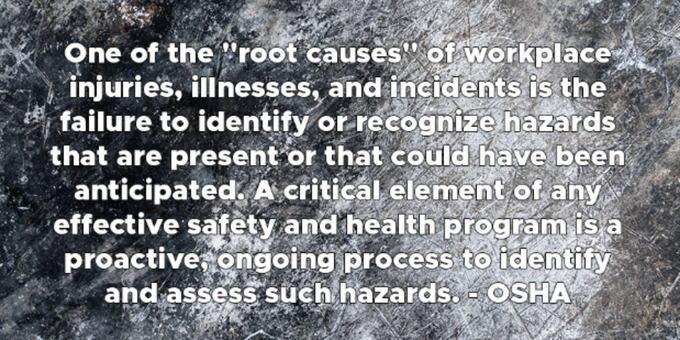
They suggest dividing safety hazards into specific categories and looking at each separately to avoid overlooking potential risks. For people who work with vehicles, the primary hazards cover five main categories:
1. Safety Accidents
Injuries experienced by an accident may happen when workers are operating equipment, handling materials, or simply moving from station to station. In some circumstances, these injuries can cause permanent disability or death.
Related injuries
- Falls from elevated areas or on the floor (wet, slippery, or greasy floors)
- Injuries due to heavy equipment and vehicles
- Eye injuries from flying objects during machining operations
- Injuries as a result of being caught in or between moving and stationary objects
- Injuries caused by rotating parts of machine tools
2. Physical Risks
Exposure to excessive noise, direct and reflected ultraviolet and infrared radiation (possible from welding operations), and working in extreme hot or cold temperatures represent some of the more serious physical hazards.
Related injuries
- Noise-induced hearing loss
- Irritation in the eyes, nose, and throat
- Heat stress
- Low body temperature or hypothermia
3. Chemical Exposures
Chemicals can present hazards to workers through exposure to things like exhaust fumes, cleaning products, adhesives, corrosive materials, etc.
Related injuries
- Chemical burns to the skin
- Irritation to eyes or airways
- Systemic injuries involving tissues or organs
- Skin diseases and conditions
- Gastrointestinal disturbances
4. Ergonomic Hazards
Harm resulting from repetitive motion or overexertion can cause pains and strains resulting in serious and disabling injuries, ranging from discomfort to severe disability.
Related injuries
- Back pain
- Muscle strain
- Ligament tears
- Other internal bodily harm
5. Work Stressors
Certain workplace hazards or stressors cause stress (short-term effects) and strain (long-term effects). These are the hazards associated with workplace issues such as workload, lack of control and/or respect, etc.
Examples of work organization hazards include:
- Workload demands
- Intensity and pace
- Control or say about things
- Social support/relations
- Sexual harassment
Worker-Focused Solutions
You can find further information, like safety regulations and recommendations, on the OSHA website. It also lists the required and suggested PPE for the industry, which includes:
Gloves
Safety gloves are essential PPE in most industries but particularly so for those in the auto industry. A recent study reported in HealthDay News said that 28% of the auto mechanics interviewed experienced more than 20 cuts on their hands just in the last year. The study also showed that 46% had a regular occurrence of hand eczema.
That means workers need gloves that can perform and protect against those hazards.
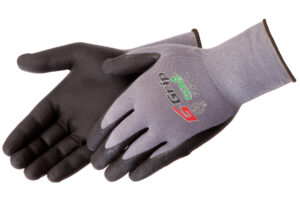
G-GRIP™ BLACK MICROFOAM NITRILE COATED SEAMLESS GLOVES: Tough enough to resist engine oils and grease but flexible enough to be used on mechanical gear, G-Grip™ Black Microfoam Nitrile Coated Seamless Gloves are an excellent choice.
Sleeves
The auto industry is not only hard on workers’ hands, but often their arms are exposed to hazards like sharp materials, sharp edges, or other cut risks. Heat or chemical burns can also be another threat that goes beyond the protection a glove can offer.
Many in the industry turn to sleeves for further safeguards. A sleeve that covers most of the arm and offers a snug but comfortable fit is a popular option.
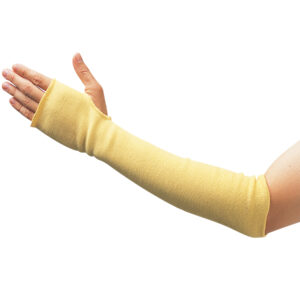
18″ YELLOW KEVLAR SLEEVE – THUMB SLOT: The 18″ Yellow Kevlar® cut-resistant sleeve combines excellent mechanical performance and comfort with double ply design for durability.
Ear Plugs
Protection for hearing is an often overlooked hazard in the auto industry, where workers are often subjected to loud noises. OSHA states that permissible exposure levels over an eight-hour workday are no more than 85 decibels (dB), and the limit for 15 minutes is 115 dB.
OSHA requires a Hearing Protection Program whenever employee noise exposure exceeds those levels. In addition, providing earplugs or other ear protection is another great way to offer workers added protection for their eardrums.
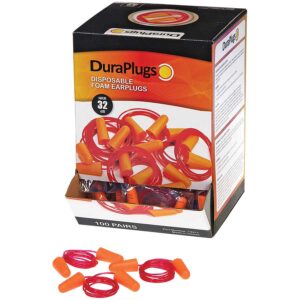
DURAPLUGS™ FOAM – CORDED: These DuraPlugs™ disposable earplugs are made of soft, comfortable foam and are conveniently corded, so they stay together.
Coveralls
Auto industry workers, like paint technicians, require additional skin protection (for the head, face, and arms) during activities that result in chemical exposures. And often, protecting all exposed skin is necessary. That’s when coveralls are the appropriate choice. They are made to keep non-hazardous particulates and liquids out while allowing moisture inside to dissipate.
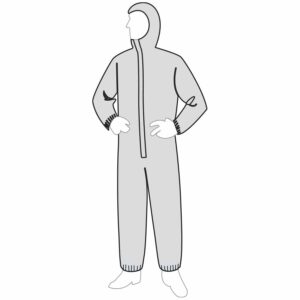
PERMAGARD™ COVERALL – ATTACHED HOOD & ELASTIC ANKLES: PermaGard™ coveralls serve as complete coverage protection made to be discarded after each use. It’s durable and breathable yet resistant to water, abrasion, bacterial penetration, and aging.
Assessing Workplace Hazards
Beyond identifying worksite hazards, OSHA recommends employers implement an organized system to collect, analyze, and interpret that information. They provide a self-evaluation tool that is free to download.
The system should include employers and employees working together to:
- Collect and review information about the hazards present or likely to be present in the workplace
- Conduct initial and periodic workplace inspections to identify new or recurring hazards
- Investigate injuries, illnesses, incidents, and close calls/near misses to determine the underlying hazards, their causes, and safety and health program shortcomings
- Group similar incidents and identify trends in injuries, illnesses, and hazards reported
- Consider hazards associated with emergency or non-routine situations
- Determine the severity and likelihood of incidents that could result from each hazard identified and use this information to prioritize corrective actions
Choosing Safety for Your Worksite
The Center for Automotive Research says the auto industry employs over 1.7 million people with jobs spanning from designing to servicing. That’s a lot of people to look out for and many potential hazards to consider.
But by identifying worksite safety hazards, conducting regular worksite assessments, and providing the correct PPE, you can proactively help to create a safer auto industry.
The Liberty Safety team offers an inventory that includes a wide variety of protective products, including gloves, sleeves, earplugs, and coveralls. Download your copy of our Complete Product Catalog to explore those and all the auto industry-specific products we have to choose from.

